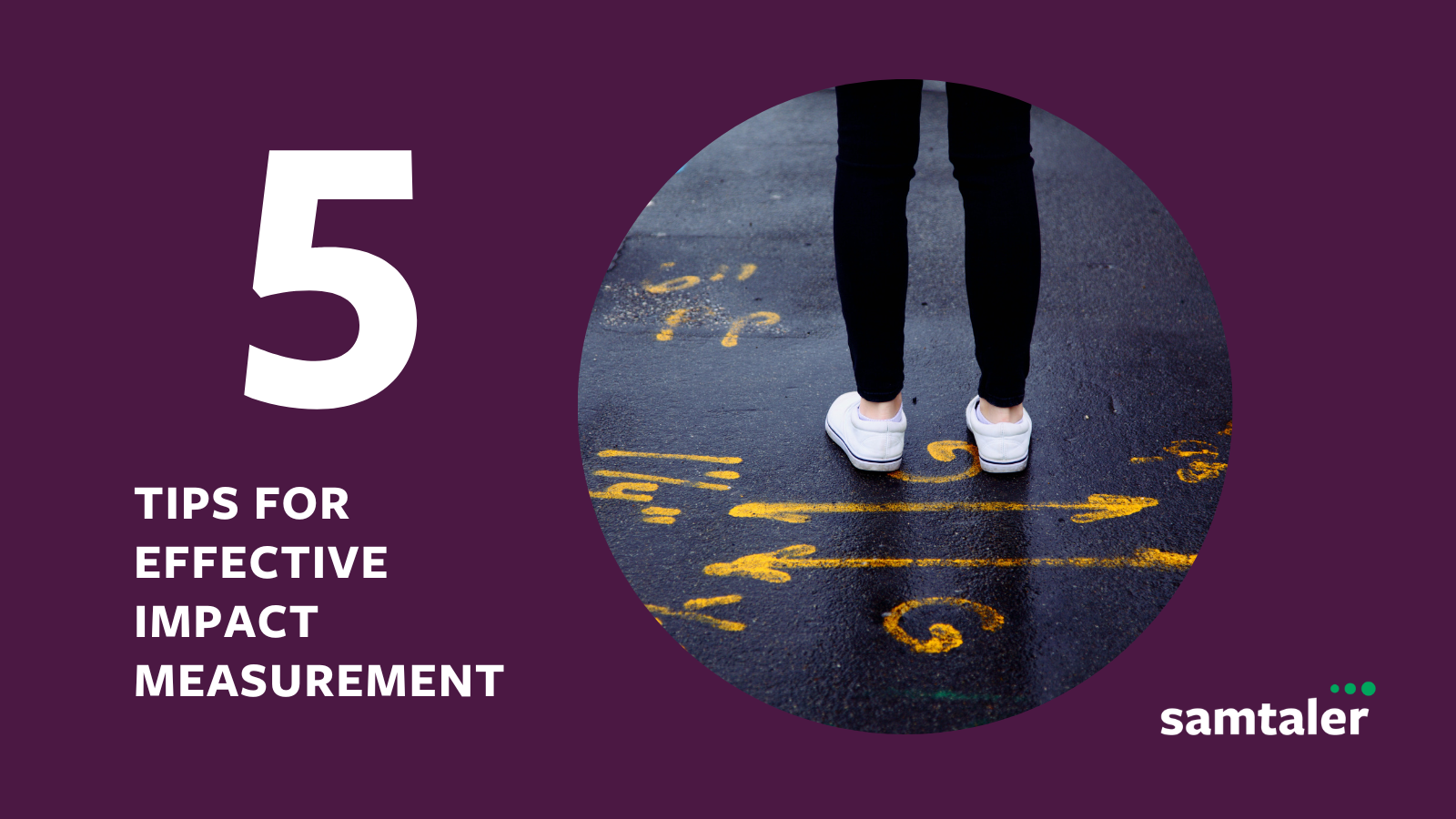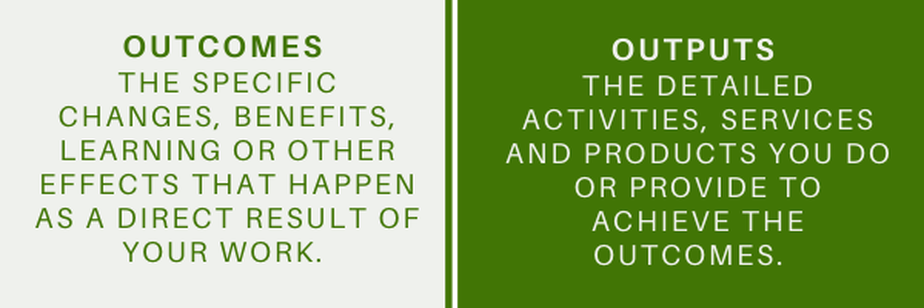Social Value Impact is Not Easy; Here is how to do it with our top 5 tips
How do you measure Social Value when it seems intangible? Photo By: Guille Álvarez on Unsplash
What’s your yardstick for success?
How do you know when something is going well or when it’s time to shift course? (and if you're looking for the article on the pitfalls of Social Value and how to avoid them, click here)
We are used to using metrics, numbers and stories to track our progress at work, and whether we’re counting pounds and pence, products produced or monitoring how long things take, measurement is usually fairly straightforward.
But what about social value? How do you measure something that seems intangible? How can you know what difference your organisation makes to people, places and the planet? How can you measure success without requiring a full-time team of social impact measurement experts? And how can you shout about your successes without it morphing into hyperbole?
“Reporting isn’t all about data. We measure what we value. Doing stuff for the right reason is the most important way organisations can truly embed and demonstrate their social value commitments. The measurement and reporting then come naturally.”
The obstacles
You are not alone if you think your organisation is struggling to measure social impact effectively. From obsessing about numbers to ignoring intrinsic problems within an organisation, such as how staff are treated or the carbon footprint of your supply chain, we repeatedly encounter many common problems across the public and private sectors.
Here are our top red flags that suggest an organisation needs to re-evaluate how it measures and evaluates ‘how it makes a difference’:
You don’t know what to measure
You don’t know how to measure it
You claim credit for too much
You don’t have an easy way to collect the data
Social Value sits in a silo
You drift towards only doing things that can be easily measured, not those that are most impactful
You only want to focus on the numbers
You only want to focus on the stories
You only want to use the data for external ‘good news’ stories
You struggle to get staff buy-in
You are not alone if you think your organisation is struggling to measure social impact effectively. Photo by Fleur on Unsplash
Back to basics
If some of these red flags resonate with you, you’re in the right place.
The good news is that impact measurement can be as simple or as complicated as you like. Genuine social value should benefit your bottom line, so there will always be that marker, but given the long-term payoff for many social value initiatives, it can be helpful to have some more immediate feedback by way of impact measurement.
At Samtaler, our approach is, unsurprisingly, very practical. We believe that your measurement and evaluation should not be a burden regarding the social value you are creating or your core business.
Our general rule of thumb is to encourage you to think first about what you do as an organisation in terms of your core business and how you will do it better, and then consider measurement that captures what it needs to drive improvement.
Measuring your social value requires you to be clear about the outcomes you are setting out to achieve and commit to strategic monitoring that will enable you to actively track your progress and result in exciting, tangible achievements that you can communicate to both your internal and external stakeholders.
Measuring your social value requires you to be clear about the outcomes you are setting out. Photo By: Sharon McCutcheon on Unsplash
1. Separate outcomes from outputs
Words such as ‘impact’, ‘evaluation’, ‘outcome’ and ‘output’ often seem to be used interchangeably, but there are important differences.
Outcomes are the specific changes, benefits, learning or other effects that directly result from your work.
Outputs are the detailed activities, services and products you do or provide to achieve the outcomes. For
example, a company in Leeds wants to employ more Armed Forces leavers in their company and knows that there is social value in doing so. The outcomes they want to achieve are a 10% increase in the number of service leavers recruited by the company and an increase in the number of service leavers and their families in Leeds who are confident in the transition to civilian life’.
The outputs might include a recruitment brochure targeted at Armed Forces personnel, training for HR to understand Armed Forces qualifications and establishing a service leaver buddy system at the company to ensure new employees are supported effectively in the workplace.
Output and Outcome Indicators are the data they need to collect to show that these things are happening.
For the outputs above, output indicators could include:
The number of recruitment brochures distributed to armed forces resettlement teams.
The number of HR staff trained in recruiting armed forces personnel.
The number of buddies trained and ready to support service personnel in the workplace.
This is the ‘bums on seats’ data – how many people are you engaging in your project or workstream? It’s an important part of the puzzle but cannot be the only part.
For the outcome above, indicators could be:
Percentage increase of service leavers recruited into the company during a specific period.
The number of people supported in the transition to civilian life by the employment of service personnel (tracking service personnel plus their immediate family members where applicable).
The number of service personnel reported increased confidence in the transition process since securing employment.
This is the ‘so what’ data – what is the difference between getting those people engaged in your project or workstream in the first instance?
Beckie Denny, our resident Impact Evaluation expert at Samtaler, says, “With every set of outcomes, we ask why?" Why do you want to achieve that outcome? It can help to keep asking ‘why’ until you uncover the change you want to make. This helps you identify the wider impact your project is contributing towards. The impact is the broader long-term change happening for individuals, the community or even on a societal level. You are likely contributing to it rather than being the sole creator of something that is exciting and headline-worthy."
“With every set of outcomes, we ask why?" - Beckie Denny, our resident Impact Evaluation expert at Samtaler,
2. Be selective about what you measure
In the illustration above, we could start to measure far more than the indicators we’ve picked. While gathering data as evidence is good, it can quite rapidly become very time-consuming, or the volume of data collected can become too large for effective in-house analysis.
There is a whole industry out there vying to help you measure and communicate the difference your organisation is making, and the conflicting terminology, myriad tools and metrics available, can quickly become confusing and all-consuming.
We often get nervous that we will miss something important if we don’t measure it, which can lead to an unsustainable amount of data collection that burdens your staff. Occasionally we feel like ‘rabbits in the headlights and therefore don’t start gathering any data at all, which can be unproductive for the project.
If you’re wondering how much to measure, it can be helpful to start with a long list of all the possible things you could measure about your outcomes and outputs. Put everything on paper on one long list, then take a step back.
What is the purpose of your evaluation? What will your business do with this information? Is it about informing others of what social value you are adding? Is it motivating staff with how much the company achieves in the community? Is it so you can develop future business programmes or areas of work? Is it because you are required to evidence your social value in tender processes?
Which of the indicators you have listed will help you fulfil these purposes? Select the indicators that best demonstrate change is happening and the ones that will be most useful when communicating your project goals.
Don’t choose too many. Two - three indicators per outcome are enough to measure change, and 1-2 indicators per output are plenty to ensure the output is within the required scope.
3. Expect the unexpected
It is important to know that sometimes unexpected changes occur directly from our work or projects. These unexpected outcomes are important to capture as sometimes they are more powerful and exciting than the outcomes we set out to achieve. So how do we leave space for the unexpected?
Ensure that you are regularly capturing qualitative data as well as quantitative. Collate case studies, interview staff members, and talk to community members. These conversations will be where you get the first inkling that something you didn’t expect to see is happening. This is often positive, but sometimes you may hear of negative changes you hadn’t anticipated because of your project, so be prepared to act quickly on the new information. Make sure you have planned qualitative ‘touchpoints’ in your routine monitoring and evaluation framework.
If you identify either positive or negative unexpected outcomes, ensure that you respond to these. Do you need to adjust what you are measuring or add an indicator to monitor the new outcome? Perhaps you need to put in place additional support to mitigate any negative outcome you didn’t anticipate.
4. Get staff buy-in
It is important that from the earliest stage possible, measurement is embedded into the workflow for your project and that staff buy-in is sought. Once staff understand the value of the data they are gathering, they are more motivated to ensure it is collated effectively and take ownership of the process.
Beckie explains: “If data is gathered but never analysed or reflected upon, it can be demoralising to the team involved in collecting the data, but if the findings are celebrated, actioned and communicated; then staff become more engaged in the importance of taking part in the monitoring and evaluation process.”
5. Own your part in the chain (and don’t claim what isn’t yours!)
The difference between outcome and output was discussed above, but what is the importance of understanding the difference between outcome and impact? The impact is the broader, long-term change we seek to contribute to in society or our community. Impact statements quite rightly sit at the head of most theories of change (where we start with the overall impact we want to have and then work backwards to work out the activities and outcome steps along the way).
In the example of recruiting service leavers, the impact you are working towards achieving may be as broad but important as ‘all service leavers in the UK can find a job when they leave the Armed Forces. The example of a particular company’s service leaver recruitment pathway is an important part of this, but the business can’t claim that they are solving all service leaver recruitment in the UK.
They CAN claim their clear, specific outcomes of ‘a 10% increase in the number of service leavers recruited by our company’ and ‘an increase in the number of service leavers and their families in Leeds who are confident in the transition to civilian life’. These contribute to the wider aim of companies working together to provide Armed Forces personnel with job opportunities but are clearly outcomes that the Leeds-based company can claim they are specifically achieving.
Owning your part in the wider impact chain is important but don’t overstate what you are doing. Be proud to claim your outcomes and the journey towards the overall impact you are supporting. Qualitative data can provide a brilliant insight into the real lives you are impacting. Case studies and quotes can also be essential in internal and external communication. You might also identify third-sector partners you want to work with to maximise the benefit of your projects and make a greater contribution to the impact you want to see.
‘Well done’ is better than ‘well said’
Every day our Linkedin feeds are flooded with colourful infographics and lengthy social impact reports from organisations keen to show off how they are ‘making a difference’, but when you dig deeper into these reports, it can be a case of ‘all talk and no action.’
|}herever your organisation is on its social value journey, it’s essential that you focus on delivering ‘action’ before ‘words’. There is plenty of time to shout about what you’re doing once you have a real story to tell. What’s more, if you are creating social value in a genuinely meaningful way, much of the communication should arguably be taken care of by your suppliers, staff and customers, becoming your ambassadors.
How we can help
At Samtaler, we understand the importance of your social value commitment. You’re here because you care about the impact your business has on society and want to be better. We want you to succeed, and we know from experience that achieving social value requires skill, strategy, and support.
To find out how we can help send an email to hello@samtaler.co.uk
Sign up to The Social Value Files for inspiration and practical ideas to create social value for your business.
If you liked this post please share.




